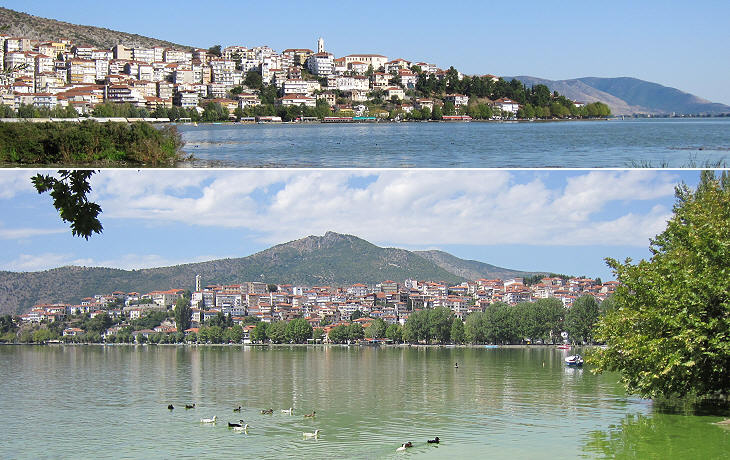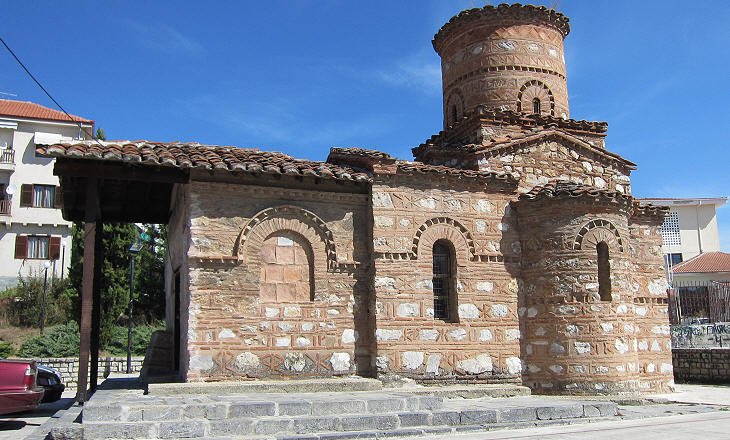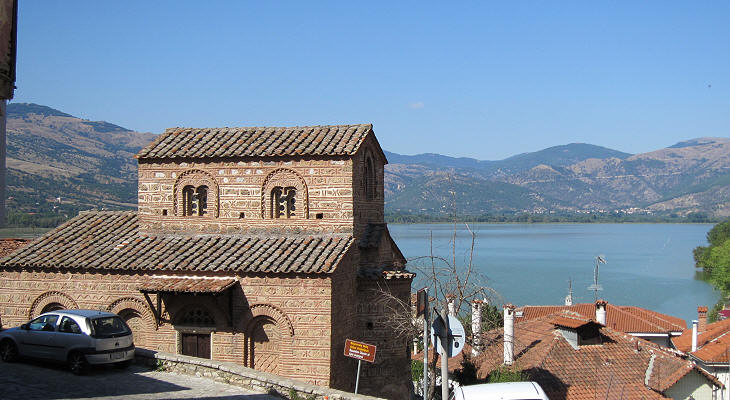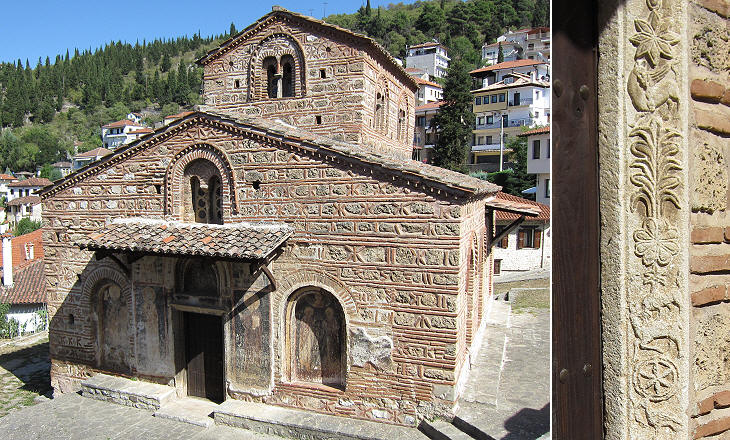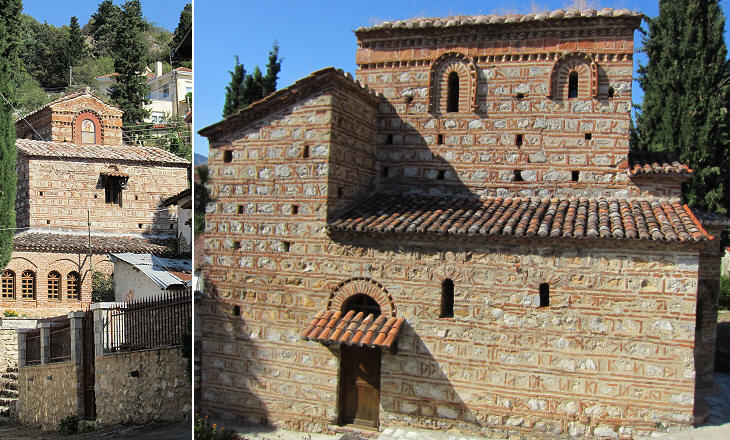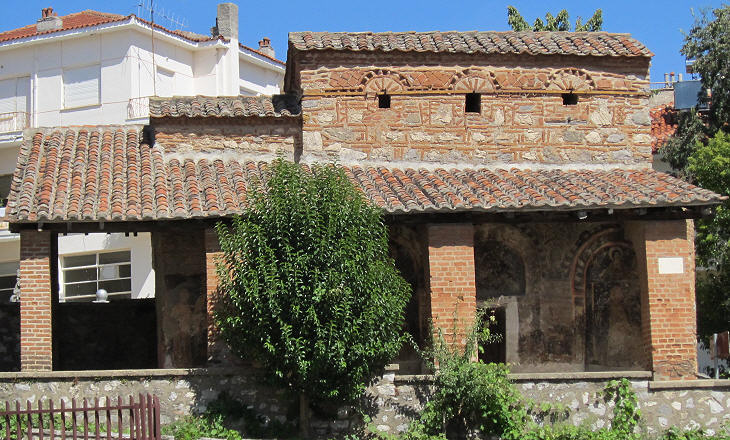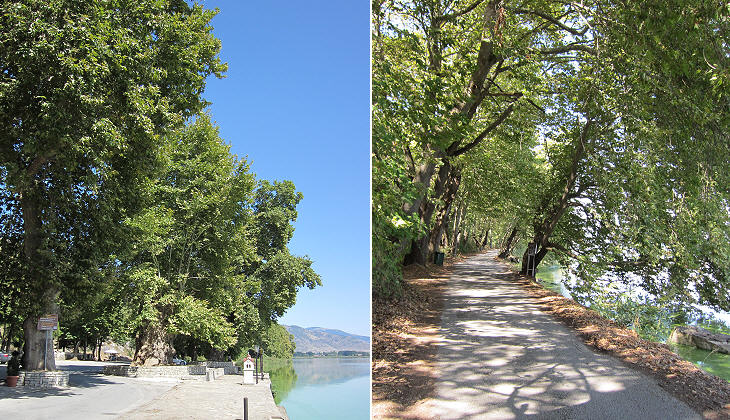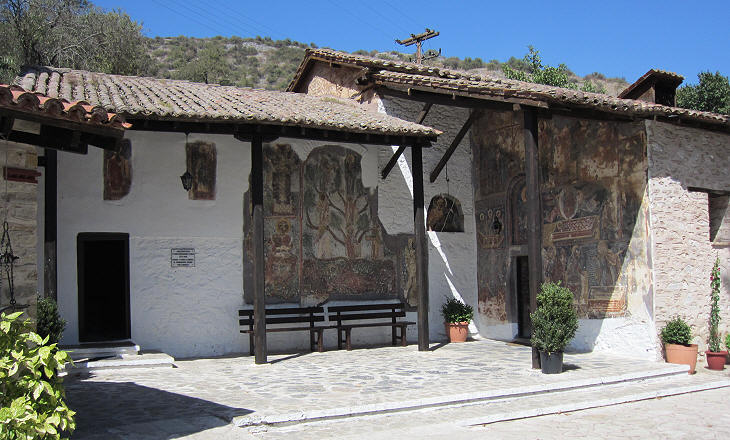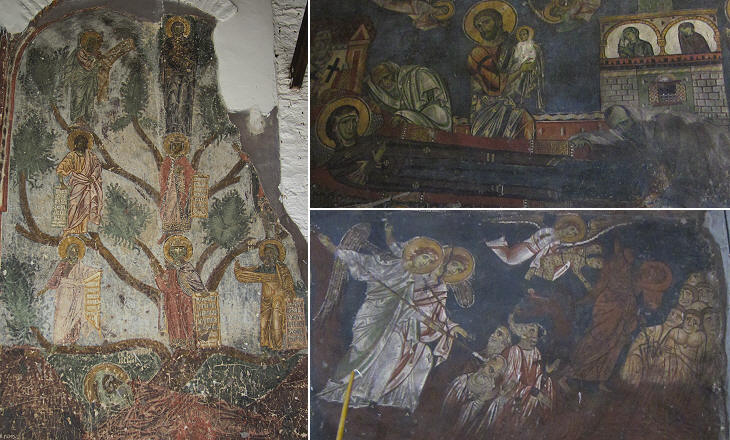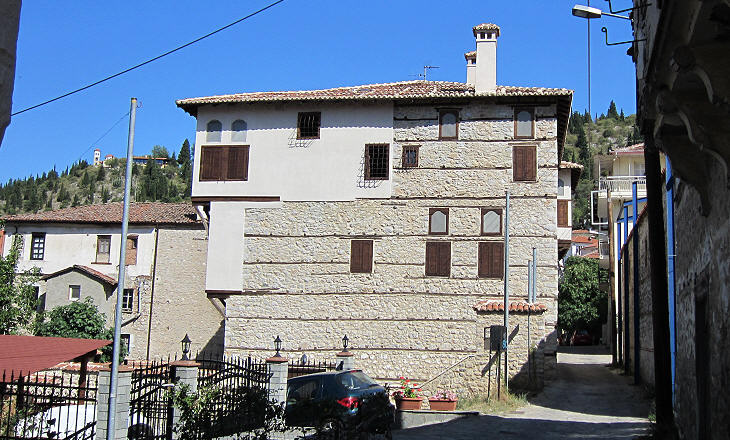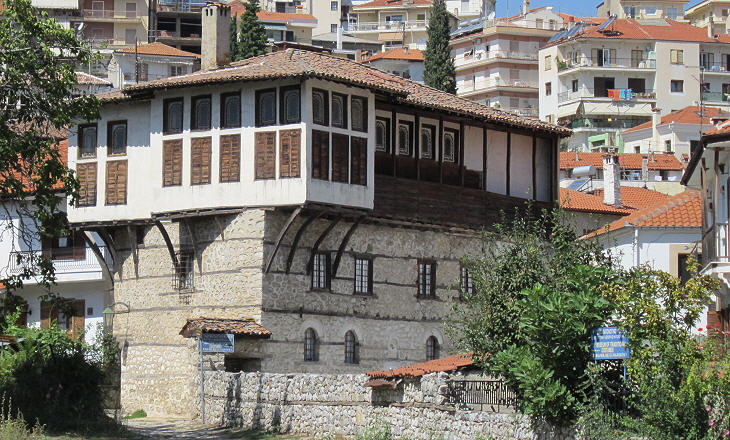  What's New! Detailed Sitemap All images © by Roberto Piperno, owner of the domain. Write to romapip@quipo.it. Text edited by Rosamie Moore. Page added in January 2011. |
 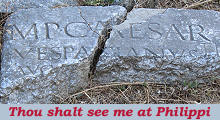 - Kastoria - Kastoria(inscription at Philippi)
Kastoria is located in northern Greece, not far from the border with Albania, at the beginning of a headland which divides Lake Orestiada into two sections. According to tradition the town was founded by Orestes; settlements around the lake have existed since ancient times, but Kastoria dates back to the VIth century AD when Emperor Justinian relocated the inhabitants of these settlements to a site protected by a castle (Lat. castrum, Gr. kastron), which probably gave the name to the town; according to another hypothesis the origin of the name is due the beavers (Castor fiber) which lived on the shores of the lake.
In 1385 Kastoria was conquered by the Ottomans; most likely it was surrendered without much fighting by its rulers, a family of Albanian origin; the conquerors did not sack the town and granted special privileges to its inhabitants. This assumption explains why Kastoria retains so many Byzantine churches and only minor evidence of the Ottoman rule which ended in 1912. Panagia Koumpelidiki is one of the oldest churches of the town and it owes its name to its high dome (Turkish: kumbet); it is located in a position commanding great views on the southern section of the lake. The interior retains paintings of the XIIIth century, but other paintings on the external wall can be dated to 1496, an indication of the status enjoyed by the Christian inhabitants of Kastoria.
Agii Anargiri means the healing saints, the most famous ones being Sts. Cosmas and Damian; the dedication was made by Theodoros Limniotes, the person who restored the church towards the end of the XIIth century; the building is a landmark of the northern side of the town.
Kastoria had special links with Constantinople because the Byzantine emperors exiled members of hostile families as well as hostile members of their own family to this remote town. These links may explain the elaborate brick decoration of Kastoria's medieval churches and in general their elaborate design.
A peculiar aspect of many churches is their vertical dimension, whether in the form of a dome supported by a very high drum or by a raised section of the nave. Agios Stephanos was built at the start of the Xth century, but it probably reached its current aspects in the two following centuries.
Prior to the Ottoman conquest Kastoria was seized by the Bulgarians, by the Normans, by the Serbs and by different Byzantine factions, yet these events did not impact on the economy of the town where wealthy families continued to build, maintain and embellish churches and chapels.
Taxiarches means archangels and this old church was in particular dedicated to Archangel Michael who was regarded by Greeks as the heir of the god Hermes as leader of souls to Hades and as the weigher (of souls) on Judgement Day. It is thought that the church served as the mortuary chapel.
Moni Panagia Mavriotissa is a monastery which lies at the tip of the headland and which can be reached in about an hour from Kastoria; it is possible to return to the town via the northern side of the peninsula. It is definitely a very pleasant walk which prepares the mind for visiting the monastery.
The monastery was founded in the XIth century when the Byzantines retook the town from the Normans; in the XVIth century a chapel dedicated to St. John the Evangelist was built to the side of the monastery's katholicon (principal place of worship). For this reason the wall paintings of the complex span several centuries. The image in the background of this page shows a detail of a painting in the external wall of the chapel.
The paintings shown above are in general thought to be works of the late XIIIth century; they include a vivid depiction of the Last Judgement and a genealogy of Jesus Christ which has a political meaning because next to it two emperors are portrayed: a member of the Comnenus dynasty which ruled over the Byzantine Empire prior to the Latin conquest of Constantinople in 1204 and Emperor Michael VIII Palaeologos who conquered the city in 1261. The association between the two emperors and the Tree of Jesse was meant to legitimate Michael VIII as the heir of the Comnenus.
It is uncertain when exactly Kastoria became a fur manufacturing centre, whether during the final years of the Byzantine Empire or during the Ottoman rule; the Ottomans authorized the inhabitants to import furs, exempted from tax; the colonies of beavers which provided (in part) the raw material for the furs, do not exist any longer, but the town is still known for its furs. Some of the families involved in fur manufacturing and trading made enough money to build imposing houses, similar to those which can still be seen at Safranbolu, a town in Anatolia which retains a typical Ottoman urban landscape.
Other pages of this section: Thessalonica Philippi Kavala Veria Clickable Map of the Ionian and Aegean Seas with links to other locations covered in this website (opens in a separate window) SEE THESE OTHER EXHIBITIONS (for a full list see my detailed index). 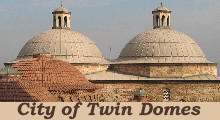 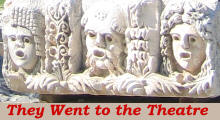 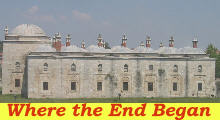 |
